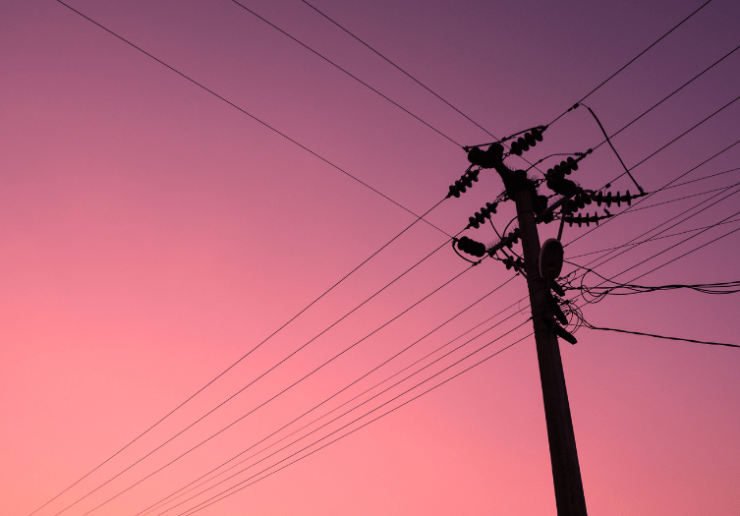Kloeckner Metals is proud to be a preferred supplier to the power transmission pole industry with robust supplies of A572-65, heavy-wide cut-to-length, and state-of-the-art plate processing centers.

Answer:
Power transmission poles are tall structures typically made of A572 steel plate that are used to support overhead power lines. They are designed to withstand the weight of the power lines and any weather conditions that might affect them, such as high winds, ice, and snow.
These poles are used in the transmission and distribution of electrical power from power plants to substations and then to individual homes and businesses. They are commonly used in areas where burying power lines underground is not feasible or cost-effective.
They are typically installed in a row or series, with the power lines strung between them. They are often placed along roadsides, in open fields, or in other areas where they are unlikely to pose a hazard to people or wildlife. The height of the poles can vary depending on the distance between them, the voltage of the power lines, and other factors.
Answer:
They can be manufactured using a variety of materials and processes, depending on the specific needs of the project. Here’s a general overview of the manufacturing process for steel power transmission poles:
Once the manufacturing process is complete, they are transported to the installation site where they are erected and connected to the power grid.
What are power transmission poles?
Answer:
Power transmission poles are tall structures typically made of A572 steel plate that are used to support overhead power lines. They are designed to withstand the weight of the power lines and any weather conditions that might affect them, such as high winds, ice, and snow.
These poles are used in the transmission and distribution of electrical power from power plants to substations and then to individual homes and businesses. They are commonly used in areas where burying power lines underground is not feasible or cost-effective.
They are typically installed in a row or series, with the power lines strung between them. They are often placed along roadsides, in open fields, or in other areas where they are unlikely to pose a hazard to people or wildlife. The height of the poles can vary depending on the distance between them, the voltage of the power lines, and other factors.
How are power transmission poles manufactured?
Answer:
They can be manufactured using a variety of materials and processes, depending on the specific needs of the project. Here’s a general overview of the manufacturing process for steel power transmission poles:
Once the manufacturing process is complete, they are transported to the installation site where they are erected and connected to the power grid.
We are pleased to share our steel and aluminum metals reference guides that...
Structural steel is one of the most widely used materials in commercial and...
When getting to know the different types of steel beams, what’s important to...
An I-beam—or ibeam—is a standard structural steel shape that serves as critical framework...
Steel beams—like h beams, w beams, and s beams—support heavy loads. In fact,...

X
The Kloeckner Metals website uses modern technologies. Unfortunately, your browser doesn't support those technologies.
Download the latest version of one of these browsers to experience the site: